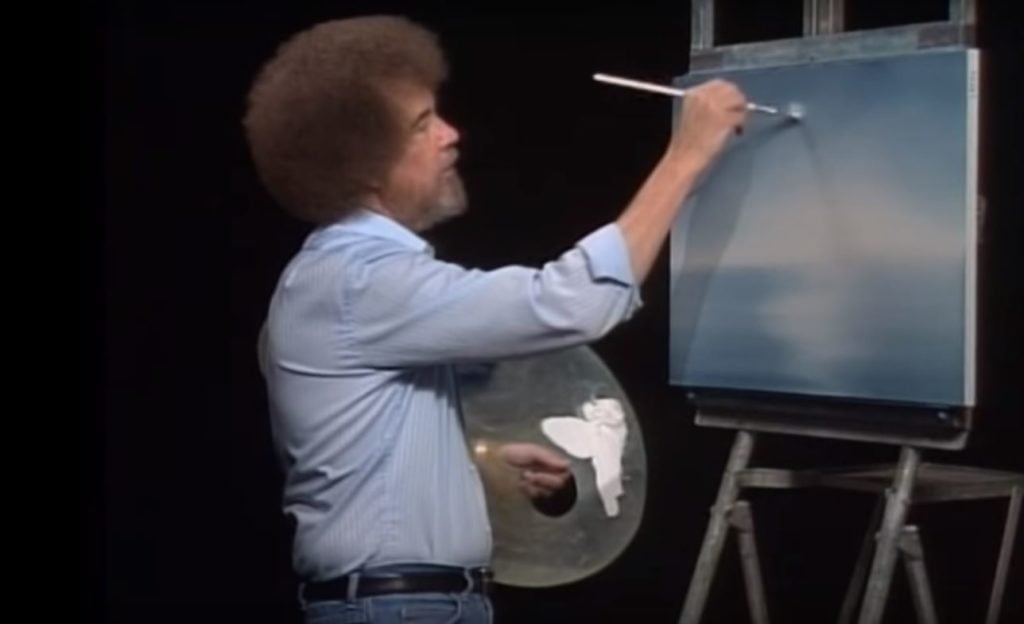Art World
Ever Wonder What Happened to All of Bob Ross’s ‘Happy Little Paintings’? More Than 1,100 of Them Are Holed Up in a Virginia Warehouse
But now a handful of them have been acquired by the Smithsonian National Museum of American History.

But now a handful of them have been acquired by the Smithsonian National Museum of American History.

Taylor Dafoe

Bob Ross painted three versions of every artwork that appeared on the Joy of Painting: one prior to the episode, for a visual reference; one during the taping itself; and one afterword, for instructional booklets.
There were over 400 episodes of the show, only a few of which didn’t feature a new Ross painting. (Ooccasionally he would host a guest who would paint a picture). Conservatively, that means there are at least 1,100 original Ross paintings floating around in the world.
But where are they?
Recently, a group of New York Times reporters set out to locate the works.
They ended up at a huge warehouse in Herndon, Virginia, which is the headquarters of Bob Ross, Inc., a humble outfit that owns and stores the artist’s paintings, sells memorabilia, and fields countless requests from people who want to, say, put Ross’s face on mints or socks or even a waffle maker. The paintings are not for sale.

Bob Ross, On a Clear Day (1988), Courtesy of Bob Ross, Inc.
In a short video report produced by the Times, Joan Kowalski, the president of Bob Ross, Inc., explained that while the company does indeed store Ross’s many works—around 1,165 of them—they lack the resources to do so properly. The video shows the paintings stacked in everyday cardboard boxes, piled together in a bland office space without much of a filing system.
“They’re not ‘climate-controlled,’” Kowalski explains with air quotes, adding that it’s not “white glove service.”
Fortunately, some of them are about to get some special attention. After receiving numerous letters from ardent Ross fans, the Smithsonian National Museum of American History in Washington recently acquired a handful of Ross’s paintings for its permanent collection. The institution also added a stepladder used by the artist on the Joy of Painting and two handwritten notebooks he kept for the second and third seasons of the show.
“The hardest part was choosing the paintings,” Eric Jentsch, a sports and entertainment curator for the museum told the Times.
He and fellow curator Ryan Lintelman made a pilgrimage to Bob Ross Inc. to select works that they felt exemplified his style and achievements, including polarized mountainscape from 1988 (titled On a Clear Day) and a moody waterfall picture from 1994 (Blue Ridge Falls).
As of now, the museum has no plans to display the paintings.